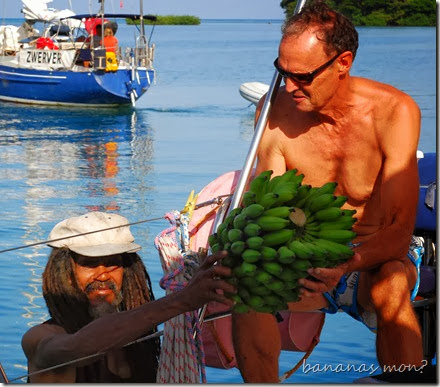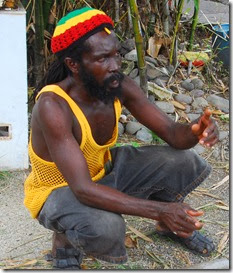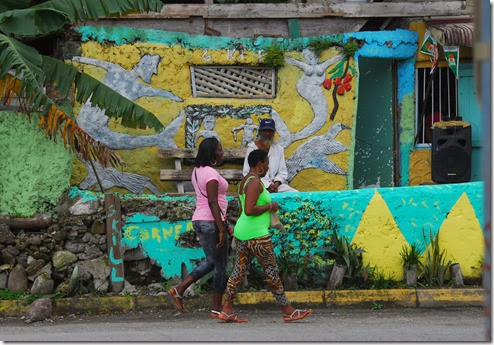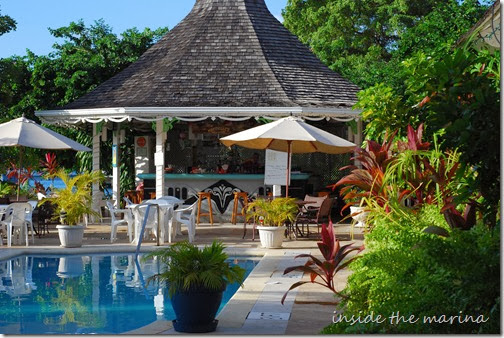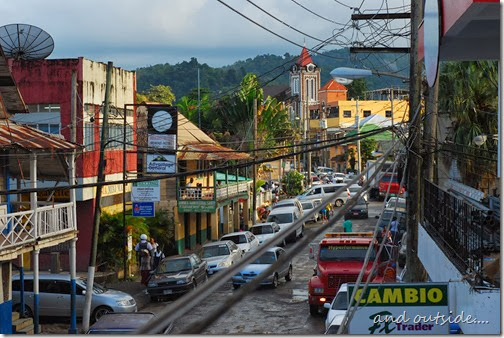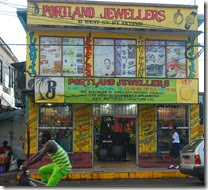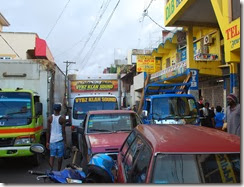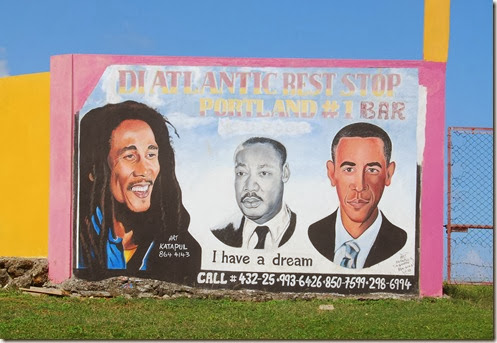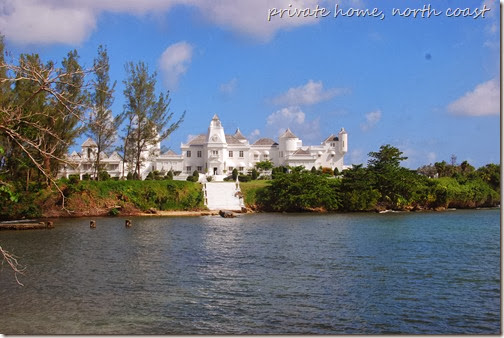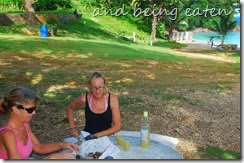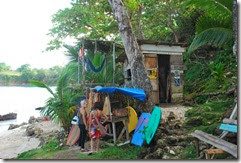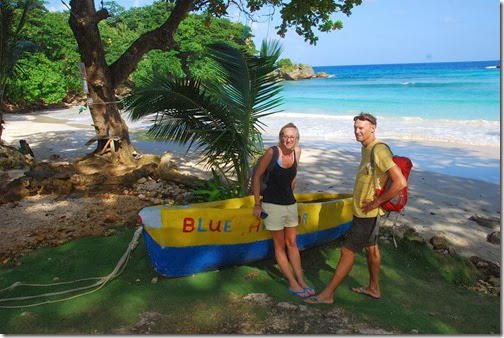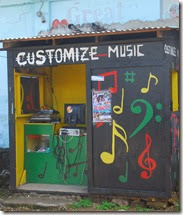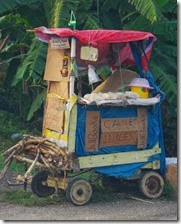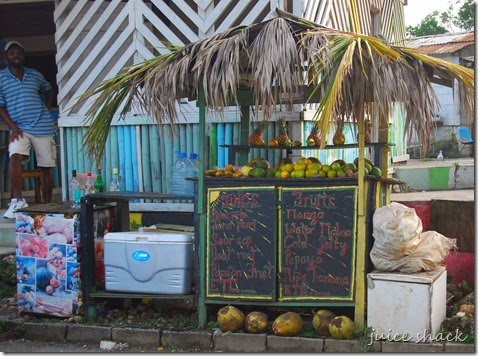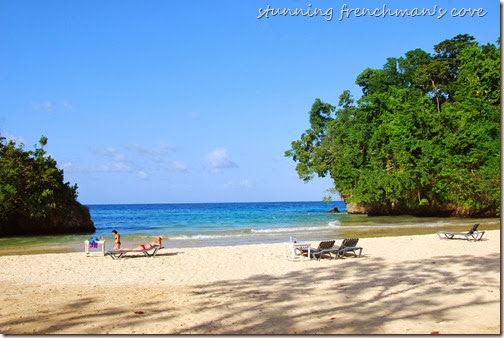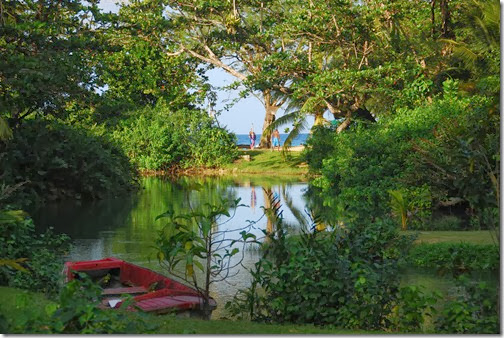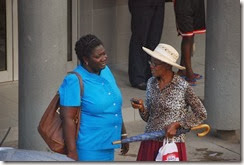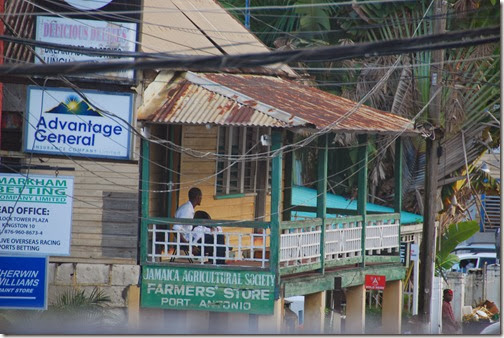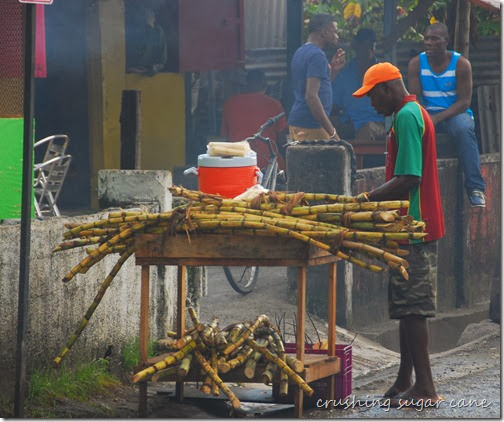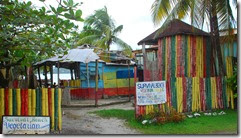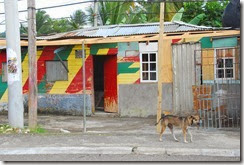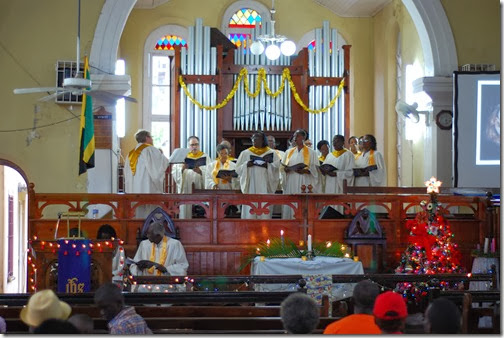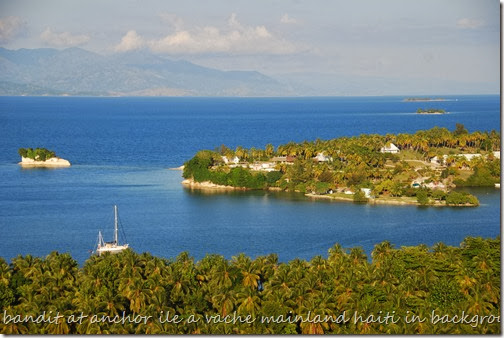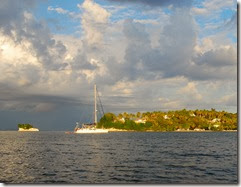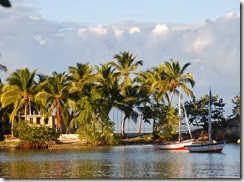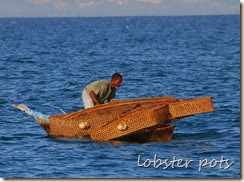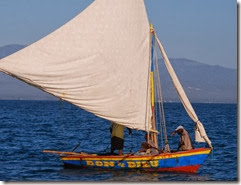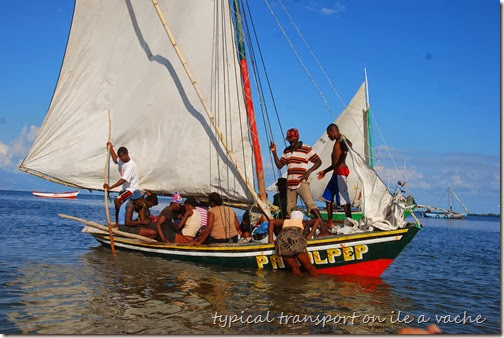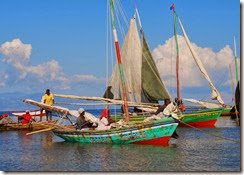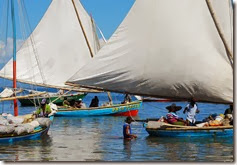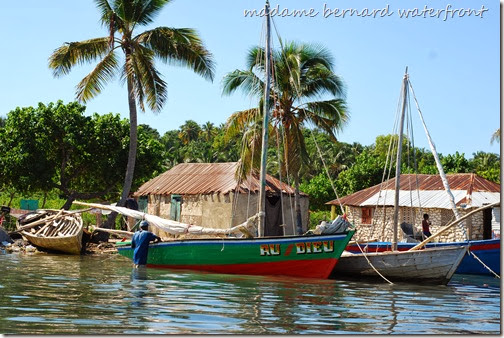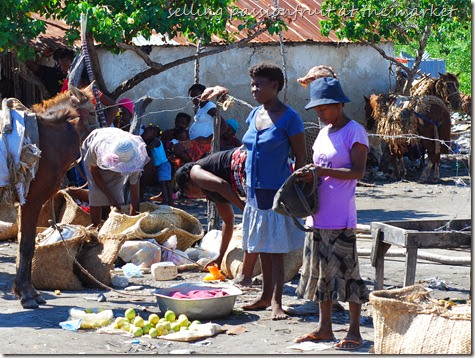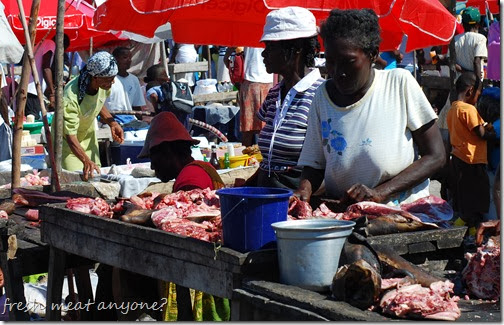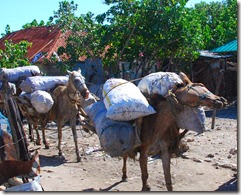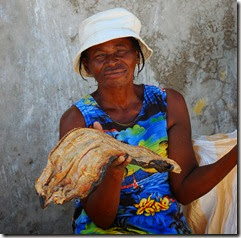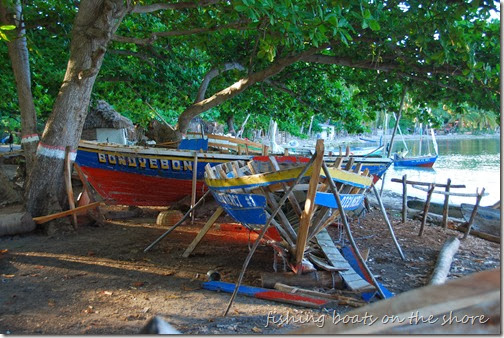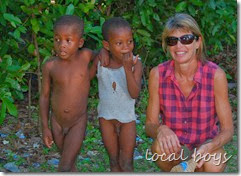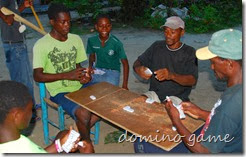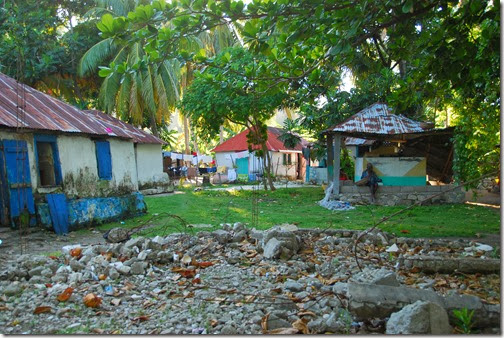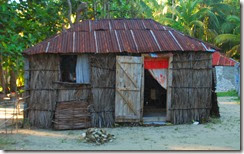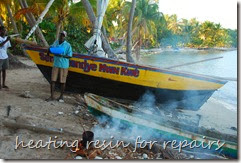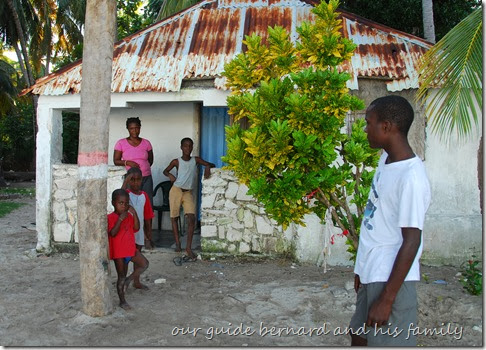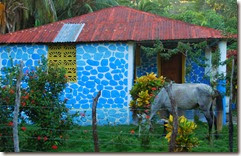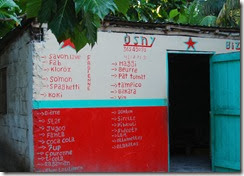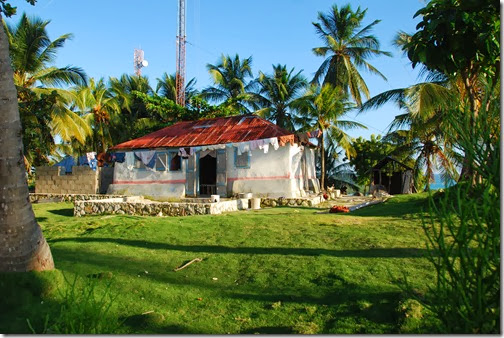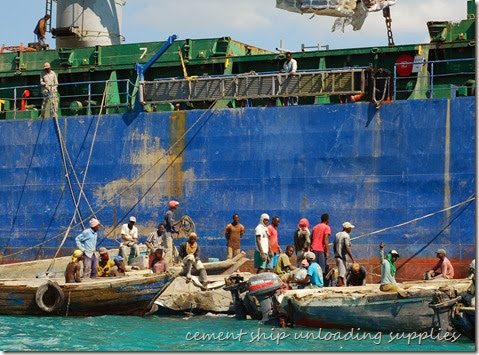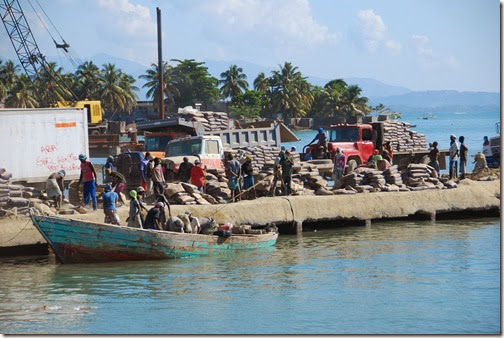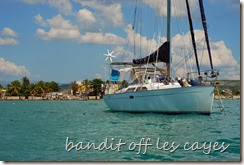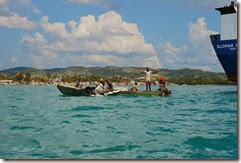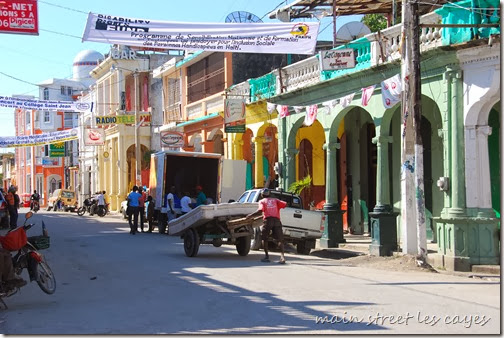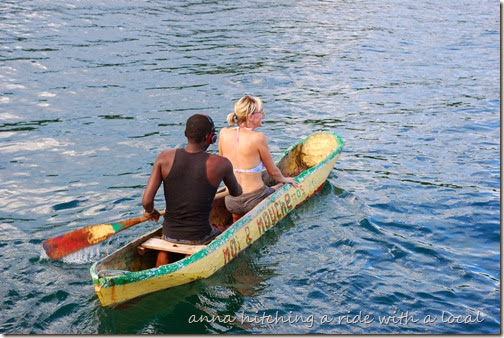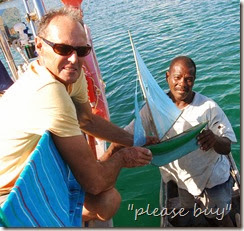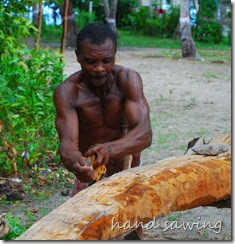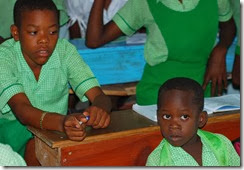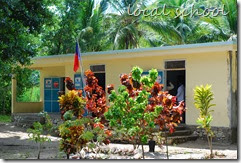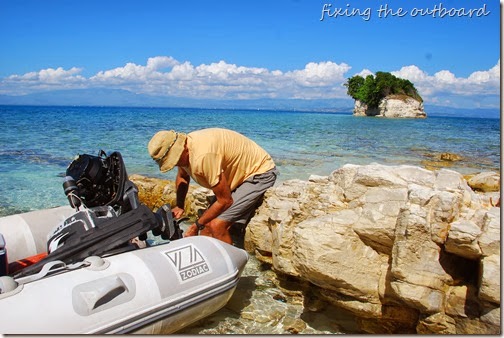Loud reggae music, colourful Rastafarians with spectacular dreadlocks, bright Caribbean colours, lots of whiffs of marijuana, spectacular scenery, lush tropical vegetation and beautiful beaches. Welcome to Jamaica…oh, and did I mention the loud reggae music?
A visit to Jamaica is an assault on the senses. On every street corner there’s a whiff of dope, the music is so loud you can’t hear yourself think and the people are amongst the most colourful in the Caribbean. Those Bob Marley Rastafarian colours are everywhere.
We arrived in Port Antonio on Jamaica’s north east coast just before dark after a rather scruffy sail from Haiti. We did catch a mahi-mahi en route but that was the only highlight of an otherwise uncomfortable 36 hours. We were immediately called onto the dock where we had a procession of polite officials including coastal police, quarantine, immigration and customs. We were surprised that they wanted to search the boat (surely you take drugs OUT of Jamaica, not bring them IN)…but they did and were even more thorough than the Cubans, insisting we open cupboards, lift up seats, pull out drawers etc. Needless to say they found nothing and left us with the distinct impression they were just being nosey.
Next morning a gorgeous scene greeted us – in the dark we hadn’t realised just how beautiful the anchorage in Port Antonio is. Elegant Royal palms line the marina waterfront which is lush with hibiscus, bougainvillea and other tropical vegetation. The anchorage fee ($12 for us) included use of the marina facilities including swimming pool, showers, laundry and free wifi – a bonus after a few weeks without – but it’s the first time we’ve had to pay to anchor! The marina proved to be a tranquil refuge from the rather shabby and noisy streets.
The town of Port Antonio is regarded as “safe” as opposed to troubled Kingston with its endemic crime issues. I was keen to revisit my youth and take a trip to the Bob Marley museum in Kingston. Having been a Bob Marley fan for years and having seen the iconic Rasta live in London in 1980 it seemed a fitting thing to do. But nothing is easy in these islands and in the end it just got too hard and expensive ($200) to organise.
We did take a trip (by taxi) along the north coast to the spectacular Reach Falls. On the way back we stopped at various gorgeous spots along the way. Some of the stops were enforced as our crazy taxi driver’s car overheated (I suspect it was as much due to his appalling driving as anything) and so we spent some time on the side of the road waiting for it to cool.
We visited the stunning Blue Lagoon – where the movie of the same name was filmed in the 70s – and beautiful Boston Bay, the home of Jamaica’s famous jerk chicken. Of course we had to sample some so did so and sat and ate it along with roasted breadfruit all washed down with a bottle of freshly squeezed fruit juice. It was delicious.
Then it was onto what is regarded as one of Jamaica’s finest beaches Frenchman’s Cove. It was pretty stunning and, as you had to pay to enter, there was no one there to hassle us. At Boston Bay we’d been inundated by men wanting to sell us anything from jerk chicken, fruit juices and jewellery to Rasta music – all a bit exhausting. We took advantage of the quiet and sat on the beach for a while before having a swim in the rather chilly waters – thanks to nearby springs.
Port Antonio was a pretty scruffy town. The streets were always busy with few tourists in sight, so I guess we stood out a bit. We did get hassled but after Haiti we felt these people really were not poor so didn’t feel the slightest guilt in not responding to their requests for money. For that we did cope a bit of abuse.
The markets were full of fantastic produce and it was great to stock Bandit with mango, papaya, avocado, pineapple, lettuce, peppers, cucumber, beans and breadfruit. We’ve figured out how to cook breadfruit and it is absolutely delicious – either panfried in oil or sautéed in a coconut milk broth with chicken, thyme and peppers. We had a great walk around the entire bay of Port Antonio which is perhaps most famous because it’s where Errol Flynn once lived.
After 10 days we were ready to leave. Weather windows for the four day/night passage down to the San Blas islands are few and far between and the Christmas winds in full swing it looks like being a bit of an uncomfortable trip. We finished off our time in Port Antonio with a visit to Christmas Cantata at the local church – a chance to listen to some Jamaican voices and ask the man in charge to keep an eye on us on our next passage. Here’s to Christmas in the San Blas!

